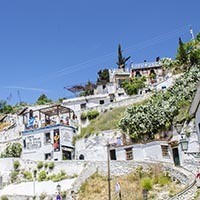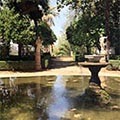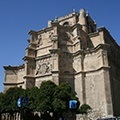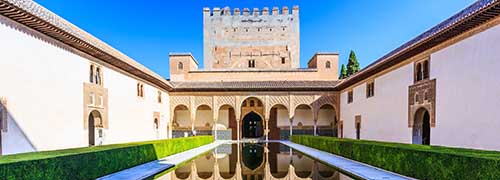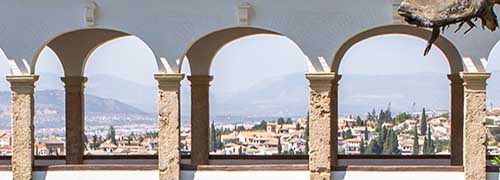
El Albaicín, Arab Quarter Granada
The Arab district of El Albaicín in Granada, Spain

El Albaicin Granada: Everything about the historic district of El Albaicín. What sights do you have in the Arab district of El Albaicín in Granada?
Neighbourhood of El Albaicín
The Albaicín is Granada's oldest Arab district situated on the hill across from the Alhambra. In the 13th century, this was a prosperous district with a slew of palaces and villas (cármenes). The Moorish Albaicín district became a maze of narrow streets and squares combined with a multitude of whitewashed houses. After the reconquest of Granada by the Catholic Kings in 1492, the original mosques in this Moorish district were torn down and replaced with churches.
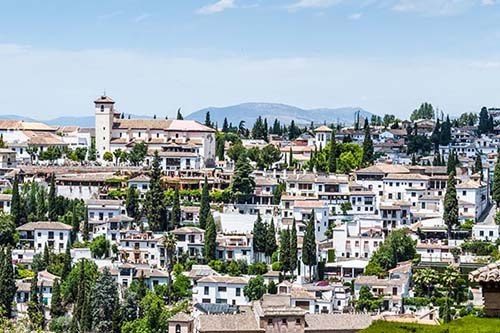 The district of 'Albayzin'
The district of 'Albayzin'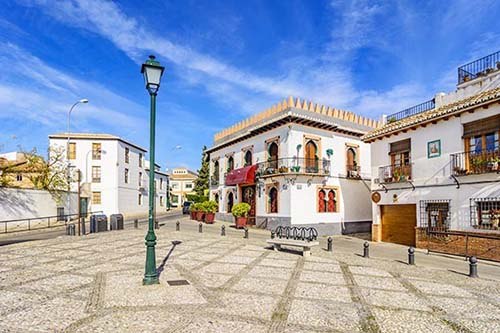
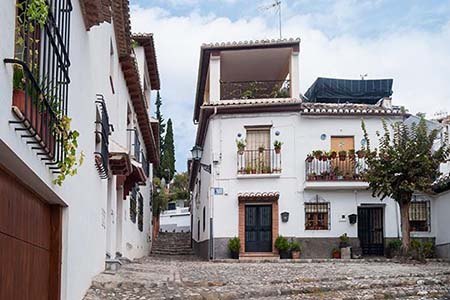
The following centuries, the district has known alternating periods of prosperity and decline. Nowadays, only one Moorish palace is left standing in this district, the so-called Dar al-Horra from the 15th century. Another Moorish remnant are the Arab baths (El Bañuelo) that were preserved because they were built above houses. Although the Albaicín district is very touristic, a walk through this Moorish quarter should certainly be part of your Granada city trip.
Sights in Arab district El Albaicin
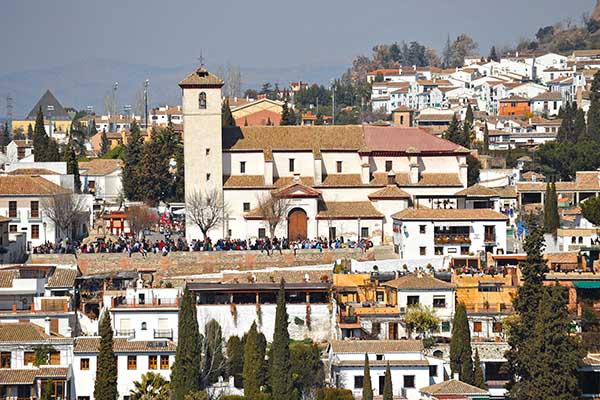 Iglesia de San Nicolas and Mirador de San Nicolas This church was built in the 16th century on behalf of the Catholic couple in the place of an ancient mosque. The church is in the middle of the Albaicín and at the square in front of the church, Plaza de San Nicolas, you have a great view of the city of Granada, the Alhambra palace and the Sierra Nevada. This Mirador de San Nicolas is well worth a visit and here you can make the most beautiful pictures of the Alhambra (including at sunset). |
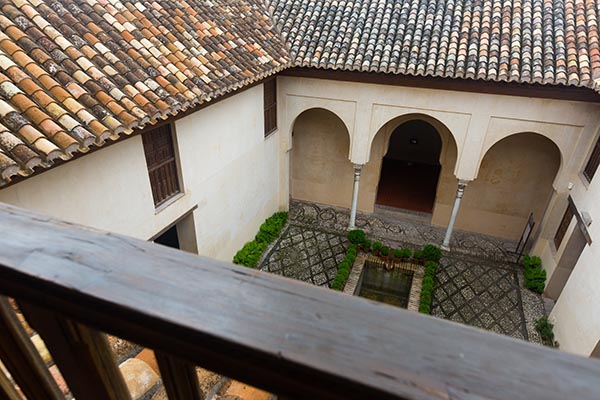 Palacio Dar al-Horra Once the residence of Boabdil's mother, this 15th-century palace offers a beautiful example of Islamic architecture with its delicate stuccowork, intriguing tilework and opulent courtyards. Delve into the history of the Nasrid dynasty at Palacio Dar al-Horra. |
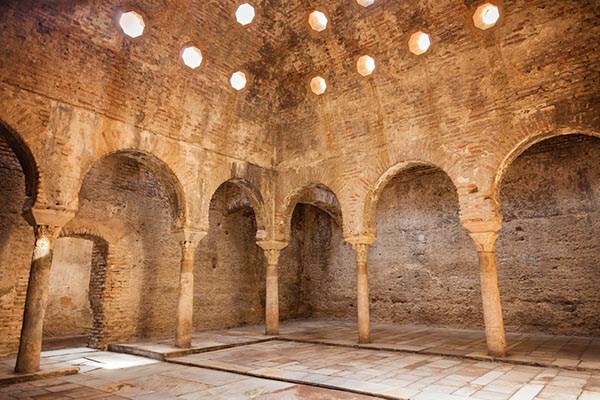 El Bañuelo These ancient Arab baths, dating from the 11th century, are a rare example of Islamic architecture in Spain. Visitors can explore the beautifully preserved baths, surrounded by graceful arches and delicate mosaics, and imagine what life would have been like here long ago around El Bañuelo. |
 Corral del Carbon A visit to Granada's Corral del Carbón offers an intriguing glimpse into the city's medieval trading history. This well-preserved example of Moorish architecture from the 14th century was once a sort of inn where traders could store their wares and rest during their travels through the region. Today it is a cultural center that welcomes visitors with its beautiful courtyard, elegant colonnades and charming architectural details |
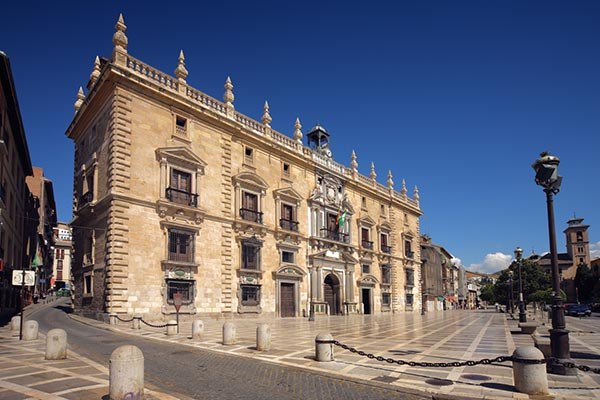 Royal Chancellery (Real Chancillería) This imposing building was built in Renaissance style by Philip II in 1530 on the Plaza Nueva. Several courts in Andalusia and southern Spain were run from the chancellery and also included the Supreme Court. |
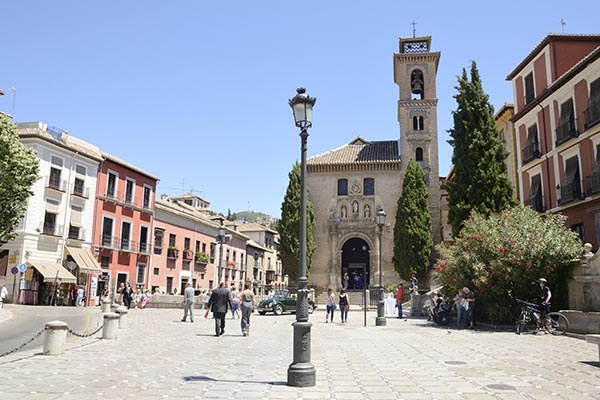 Iglesia de Santa Ana Opposite the Royal Chancellery at Plaza Nueva is the church of Santa Ana. This 16th century church is made of brick and built in mudejar style. Characteristic are the beautiful portal and the minaret tower in which a bell was later placed. |
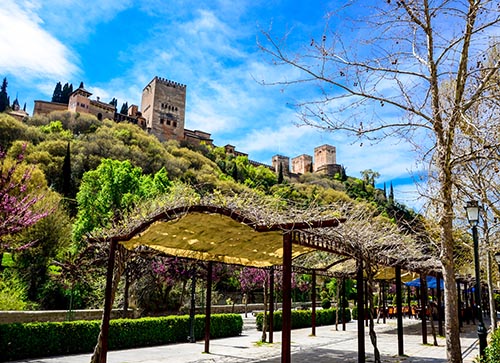
Paseo de los Tristes Just before you arrive at the higher parts of the Albaicín you arrive at the Paseo de los Tristes; a cozy street with a fountain and terraces with a beautiful view of thet Alhambra. |
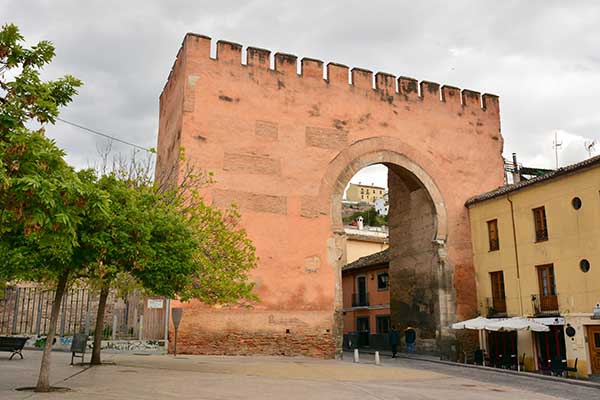 Puertas de las Murallas These city gates come from the 11th century and are built in continuation of the Albayzín fortress. These walls included the entire Albayzín district. Four gates are still intact: Puerta de Monaita, Puerta de Elvira (foto), Puerta Genil en Puerta Nueva. |
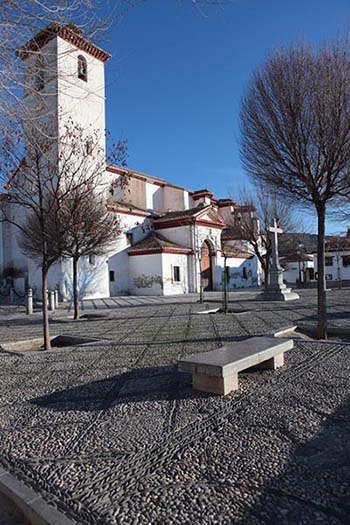 Church St. Nicholas
Church St. Nicholas 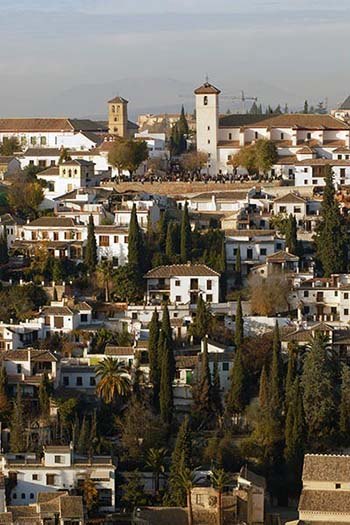 Mirador de San Nicolas
Mirador de San Nicolas 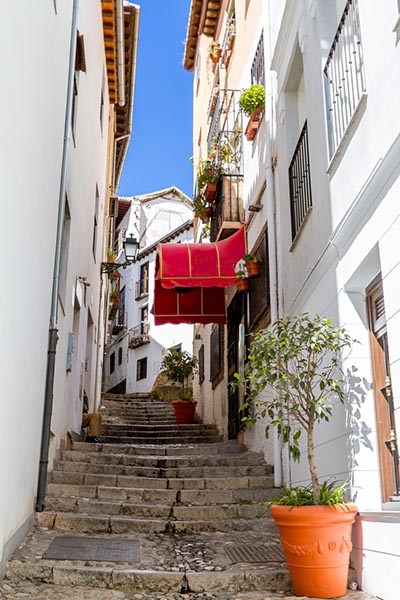 El Albaicin
El Albaicin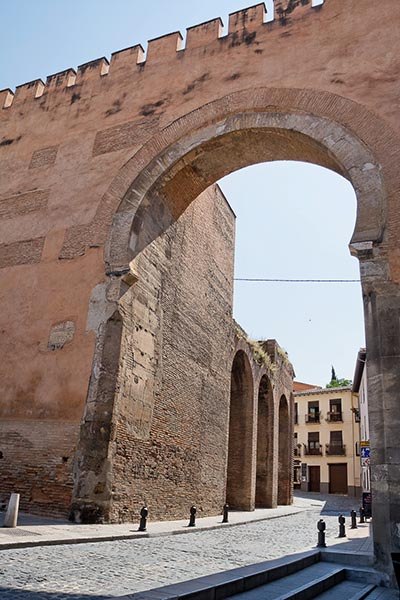 Puerta Elvira
Puerta ElviraWhere is the Albazyn district in Granada?
Also close by:


